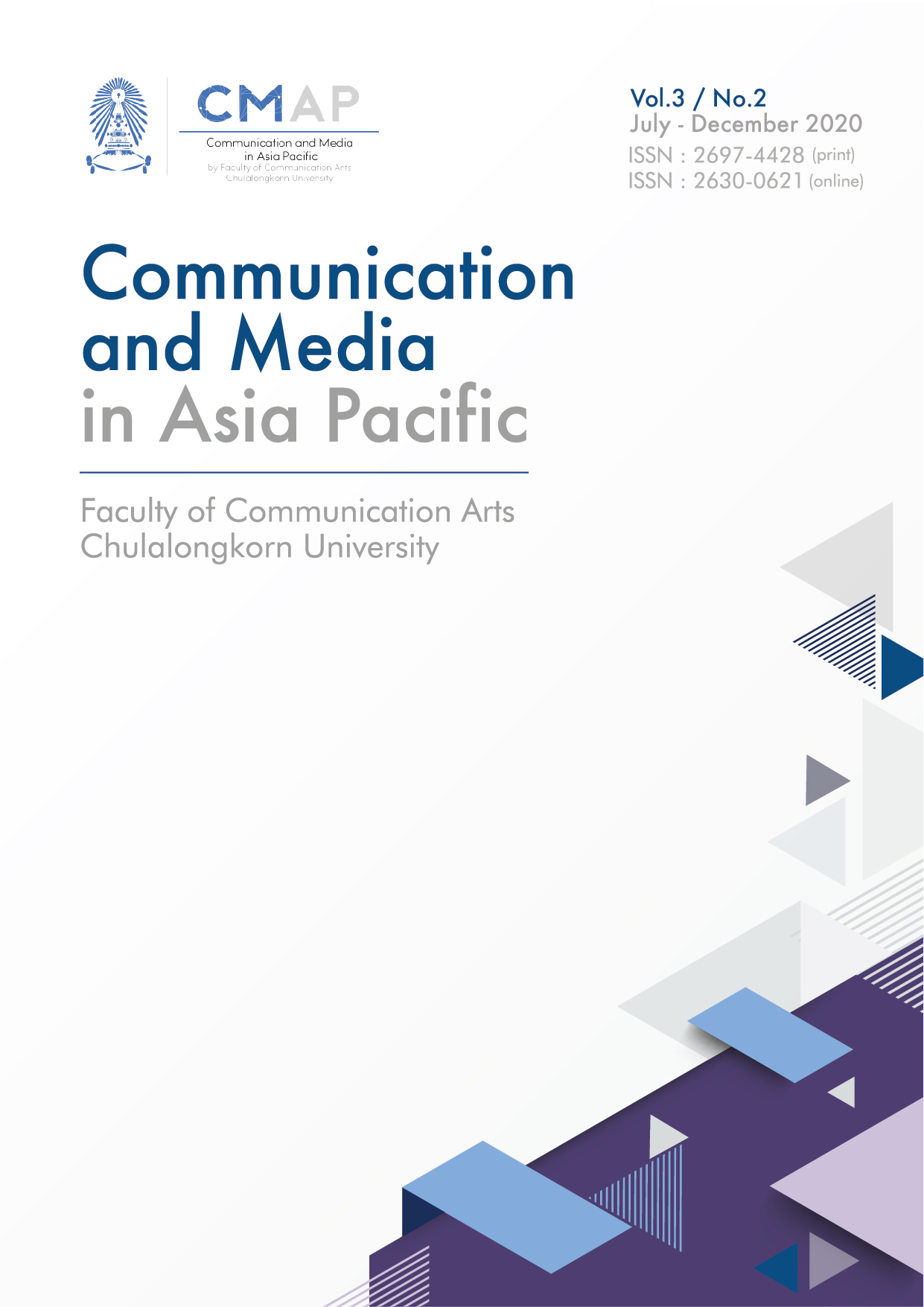Psycho-Physical Character: The Double in Thai Film entitled The Whistle (2003)
Main Article Content
Abstract
This article studies a psycho-physical character in a film entitled The Whistle (2003). The film presents a romantic story that is unique in the Thai film industry. It is based on the doppelgänger concept which the film’s plot centers on a double character. Furthermore, the article focuses on the cause and impact of the double’s self-presentation, and the self self-model that can relate to the main character. The doppelgänger in most films reflect the dark side of the character. However, the character’s double in this film is a better version of himself. This paper aims to analyze the background of the characters’ insufficiency, study the inspiration behind the characters’ actions, observe the projection and functioning of the self-presentation, and discuss the main character’s mind and body. To achieve these objectives, the author views the film under levels of impression monitoring, the double and social relations as well as dualism frameworks. In conclusion, this study can provide critical analysis of the appearance of the doppelgänger, the possible motivations of the self-presentation. Finally, the double creation will be indicated in this article.
Article Details
References
Freud, S. (1954). The Interpretation of Dreams. trans. J. Strachey. London: G. Allen und Unwin.
______. (1980). The Psychopathology of Everyday Life. Harmondsworth: Penguin Books.
Fuery, P. (2004). Madness and Cinema: Psychoanalysis, Spectatorship and Culture. Basingstoke, New York: Palgrave Macmillan.
Gabbard, G. (ed.). (2001). Psychoanalysis and Film. London: Karnac.
IMDB, List of 40 Best Thai Movies. Retrieved June 10, 2019 from https://www.imdb.com/list/ls052285995/.
Kaplan, A. (1990). Psychoanalysis and Cinema. New York, London: Routledge.
Lacan, J. (1987). The Four Fundamental Concepts of Psycho-analysis. trans. A. Sheridan. Harmondsworth and New York: Penguin Books.
Lacassagne, A., Nieguth, T., & Dépelteau, F. (eds.). (2011). Investigating Shrek: Power, Identity,
and Ideology. New York: Palgrave Macmillan.
Leary, M. (1996). Self-Presentation: Impression Management and Interpersonal Behavior. Boulder, Colorado: Westview Press.
Lebeau, V. (1995). Lost Angels: Psychoanalysis and Cinema. London, New York: Routledge.
Maybury-Lewis, D. & Almagor, U. (eds.). (1989). The Attraction of Opposites: Thought and Society in the Dualistic Mode. Ann Arbor: The University of Michigan Press, cop.
Meixner, U. (2004). The Two Sides of Being: A Reassessment of Psycho-Physical Dualism. Paderborn: Mentis, cop.
Oxford Dictionaries. Obscurantism. Retrieved May 10, 2019 from https://en.oxforddictionaries.com/definition/obscurantism.
Priest, S. (1991). Theories of the Mind. London: Penguin Books.
Rank, O. (1971). The Double: A Psychoanalytic Study. trans. Tucker, H. North Carolina: The University of North Carolina Press.
Ryle, G. (1984). The Concept of Mind. Chicago: University of Chicago Press.
Smith, J. & Kerrigan, W. (eds.). (1987). Images in Our Souls: Cavell, Psychoanalysis, and Cinema. Baltimore, London: The Johns Hopkins University Press, cop.
Wood, J., Tesser, A. & Holmes, J. (eds.). (2008). The Self and Social Relationships. New York: Psychology Press.


